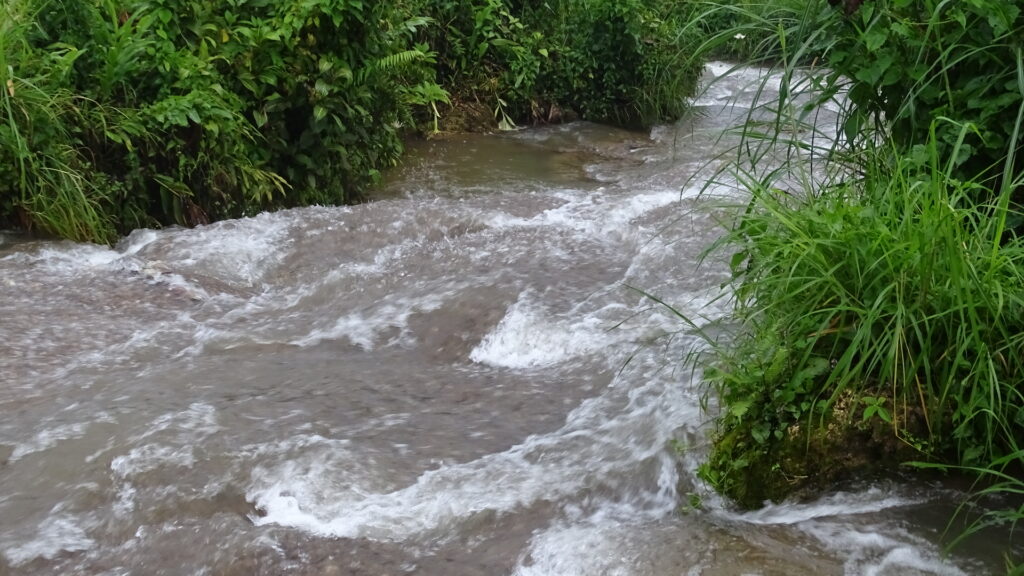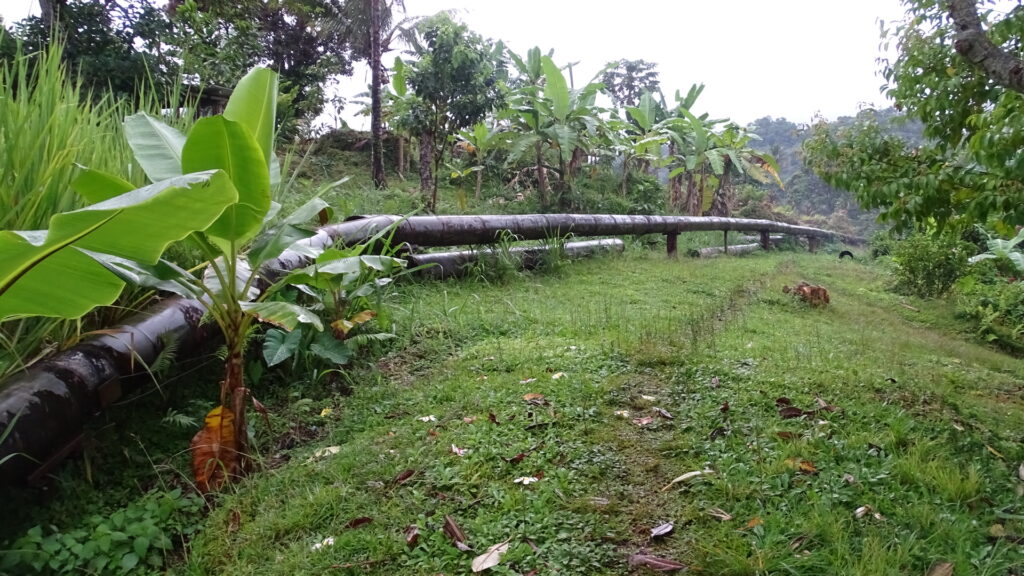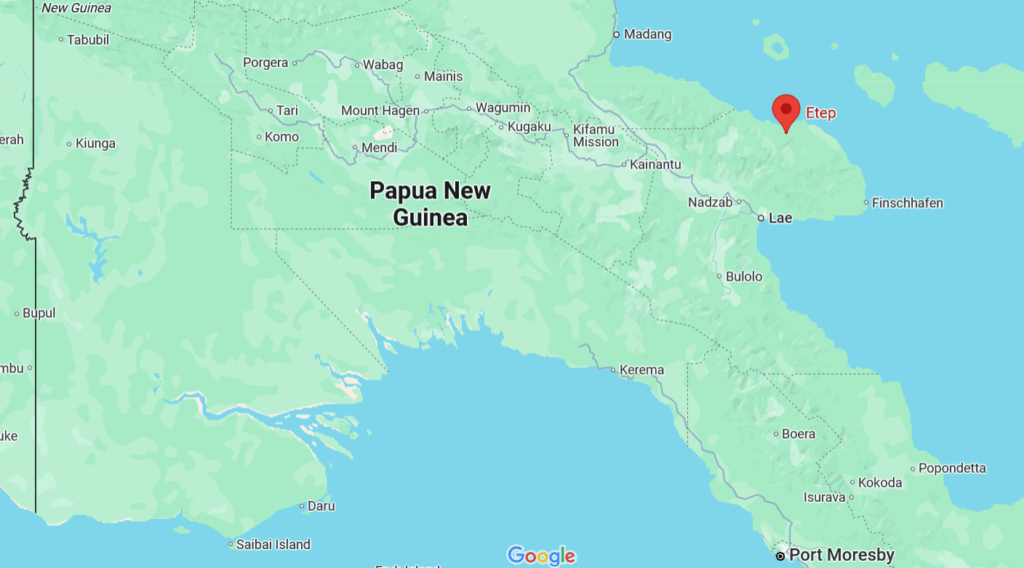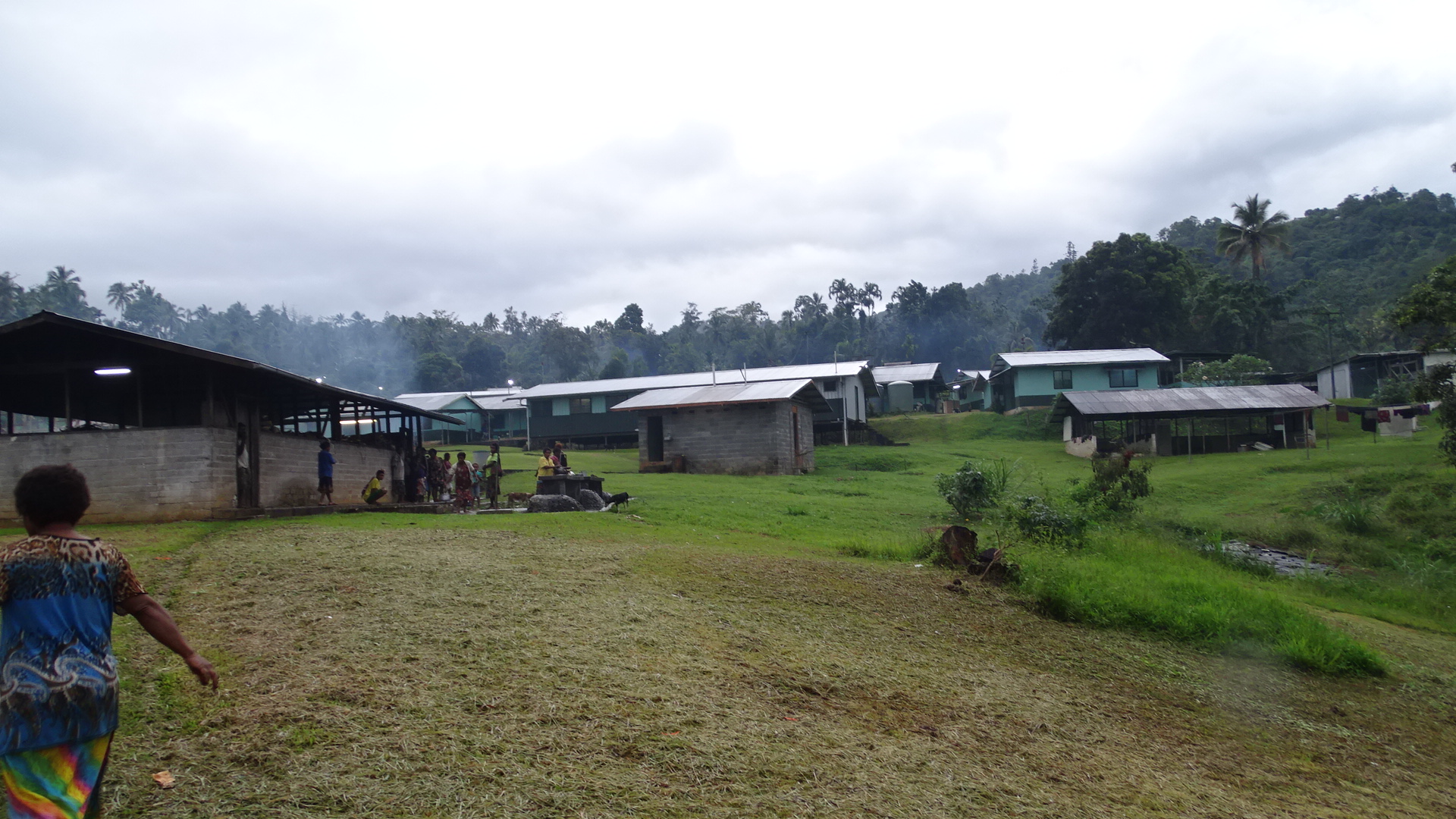
Outline
Etep Rural hospital is a health facility founded by Lutheran missioniaries in the 1950s. It is located about 6km inland uphill from the coastal town of Wasu in the Tewae-Siassi district of Morobe province. Etep hospital is the main medical facility serving a population of approx 800 persons living nearby and another 4000+ persons living in villages in the coastal hillside around Wasu and over the mountain pass road into the Kabwum area.
The hospital and surrounding settlements have no connection to the public power grid. They are served by a small self-constructed hydro-turbine bolted together with most simple materials by an ingeneous missionary decades ago. The level of power supply is highly dependent on the water flow of the nearby river. The hydro-station can provide lighting for the houses and it is not suitable for operating sensitive medical equipment or hospital machines.
Specific challenges
The current hydro-station is a delicately wired-up system running power lines into the surrounding settlements and all the way down to the coastal town of Wasu using medium voltage transformers on both ends. The solar system shall be designed to decouple the hospital and to serve the medical campus independently from the hydro station. This will provide a stable and reliable power source for the hospital, reduce the current system load and otherwise leave the hydro station unaffected. An integration of the hydro and the SolSol station does not seem reasonable at this point in time.
Planned solution
The Etep hospital campus consists of the main hospital building, 4 connected ward houses, plus some 20 houses for doctors, nurses and medical staff.
The main hospital building has a large shade-free and stable roof to support the solar system. A solar array of 50 kilowatt power with a battery storage system of 90 kWh capacity have been calculated sufficient to keep the hospital and the surrounding residential houses powered at all times.
Estimated completion date
Etep Rural Hospital has been submitted as a primary candidate for Funding. If Funds will be granted, implementation shall be completed by mid- 2026.
Required resources
Approx 4-6 persons, men and women equally will be needed to operate, maintain, repair the system and to maintain it in good quality over its expected lifetime of 15-20 years.
The local technical team will attend the SolSol “Engineering School” courses to learn how a solar systems works and how to keep it in good health condition. This includes basic training on installation of the components, maintenance, regular quality controls and administration and recording of the energy meters deployed throughout the campus.




